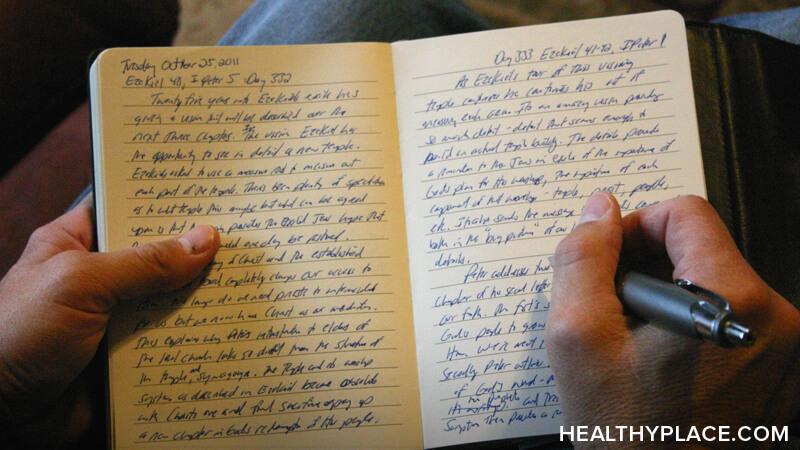How a Self-Harm Recovery Journal Can Help You Heal

A self-harm recovery journal can be a powerful tool for healing from self-injury. Here are a few reasons why you might want to add one to your recovery toolbox, if you haven't already done so.
A Self-Harm Recovery Journal Is a Safe Place to Vent
Having people you can talk to about your self-harm recovery is important, but let's face it: some things are difficult to say, even to the people we trust the most. In some cases, you may need time to parse out exactly what it is you want to say before you say it. Other times, you may feel overwhelmed but also worried about overburdening others with your problems.
While talking things out is often an important part of the healing process, writing things down can also be incredibly freeing. You don't have to worry about how your self-harm recovery journal will feel or think if you tell it you're worried about relapsing. What you write doesn't even have to make sense. Your journal is a safe place in which you can purge all of the bad thoughts and feelings holding you back without worrying about negative repercussions.
If you have cause to be concerned about someone reading your journal without your permission, consider purchasing a journal with a lock or finding a good hiding place. If these options do not work for you, you can try digital options or even write in code. You may even create a "destructible" journal—that is, one that you can tear the pages out of and destroy after writing in them. It's not as ideal as a journal you can keep and refer back to as you continue your healing journey, but just the act of writing your thoughts down (and even the act of physically destroying them) can be cathartic.
A Self-Harm Recovery Journal Helps You 'Write Your Way Out'
Sometimes, simply venting isn't enough. I've found that a self-harm recovery journal is also an excellent tool for practicing cognitive behavioral therapy techniques and other methods for analyzing, challenging, and reframing the negative thought patterns that can exacerbate self-injury cravings.
While it is possible to practice these techniques without pen and paper (or screen and keyboard), in my experience, practicing them in writing can help you practice them more effectively by:
- Making it easier to keep your thoughts organized
- Cementing the healthier, more balanced thoughts in your conscious, as well as your subconscious, mind
- Allowing you to track your thought patterns and progress over time
You can organize it in any way that makes sense to you. A bullet-style journal is good for quickly jotting things down if you're short on time (or not big on writing). A flow chart or mind map can help you make sense of more complicated, overlapping emotions and thoughts you might be experiencing. And a more traditional diary-style approach might be ideal if you find exercises such as freewriting or long-form journaling more helpful.
What to Write in Your Self-Harm Recovery Journal
If you find yourself staring at a blank page and feeling a bit paralyzed, here are a few ideas to help you start writing in your self-harm recovery journal.
Purchasing a preformatted self-harm recovery journal can also prove handy if you're feeling lost as to what to write or how to keep it all organized.
In the end, it's all about what works for you—what helps you feel better and what helps you keep moving forward.
APA Reference
Kim Berkley
(2021, August 19). How a Self-Harm Recovery Journal Can Help You Heal, HealthyPlace. Retrieved
on 2025, December 20 from https://www.healthyplace.com/blogs/speakingoutaboutselfinjury/2021/8/how-a-self-harm-recovery-journal-can-help-you-heal